The best and most expensive of all salts – Fleur de Sel
Who produces the most expensive salt in the world? The profession of the salt worker, the paludier, has a long tradition in Guérande, the southern part of Brittany. For more than 2,000 years, salt workers have been wringing the precious Breton gold from the ocean. Long before Vasco da Gama returned to Portugal in 1499 with the first cargo of spices from India, Guérande salt was successfully traded.
Sea salt was a seasoning, a vital mineral and a valuable preservative. Gilles Morel and Matthieu Le Chantoux also produce their salt varieties on these traditional clayey soils in the Guérande basin near Nantes: Sel gris marin and Fleur de Sel. Uncle (Gilles) and also the nephew (Matthieu) are lateral entrants. Gilles Morel was previously in the shellfish farming of the Betragne and Matthieu Le Chantoux was a banker abroad for many years. A fortunate circumstance for me during our visit, because so I could talk to him in English.
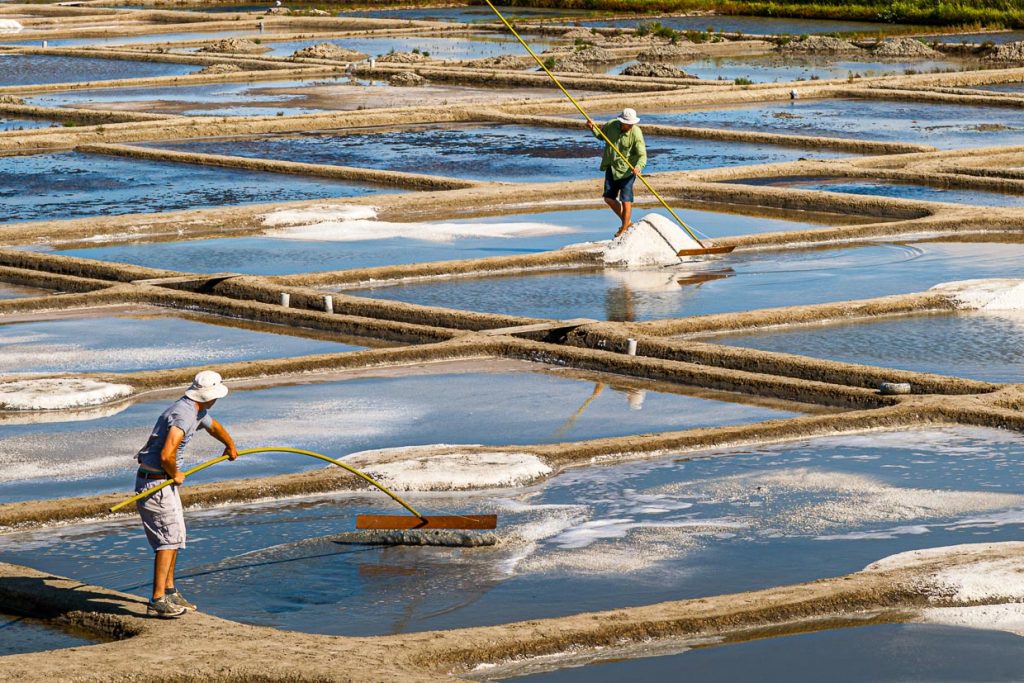
We arranged to meet on a summer day in the storage rooms of the young company in St Molf. There are still around 300 paludiers in the area around the small fortified town of Guérande. The vast majority of these salt farmers are members of a cooperative. They deliver their salt harvest to the headquarters and are not involved in further marketing.
Morel et Le Chantoux is different: from the muscle work in the salt fields to the design of the product labels, everything is in the hands of the two Frenchmen. With their salt manufactory, they are a true rarity. Because among the paludiers of the Guérande, there are only a few more than ten who have dedicated themselves to salt from A – Z.
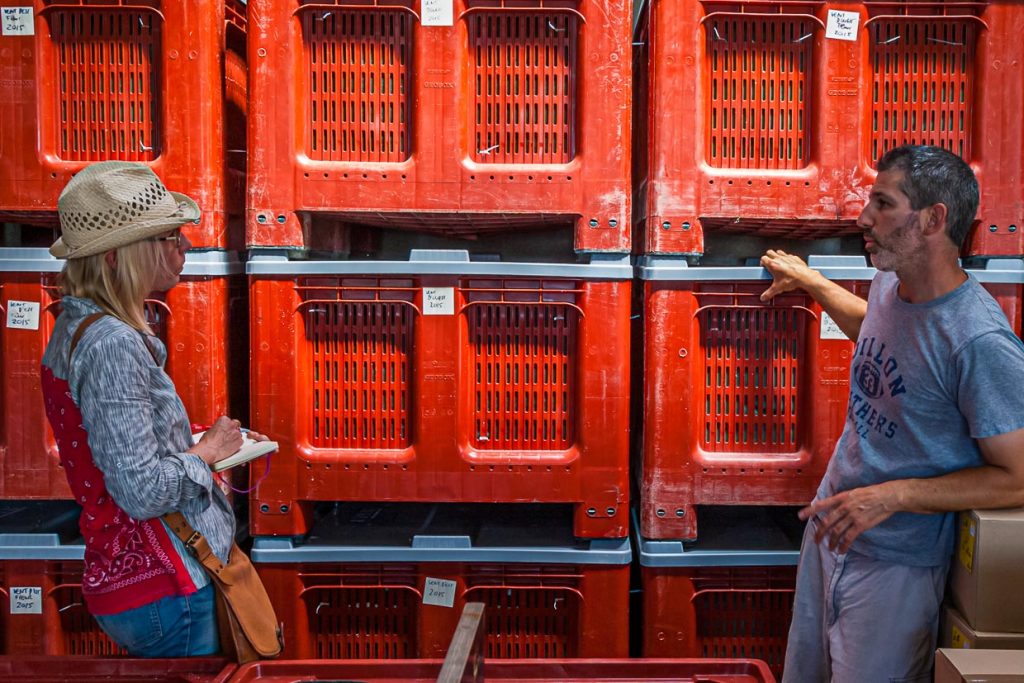
Matthieu leads me through the warehouse. The salt harvest from various vintages is stored in large food-safe crates, sorted by grain size. Gilles and Matthieu harvest 50 tons of normal salt and 800 kilos of fleur de sel every season
from their 46 leased basins. Outside the hall, too, around 70 tons of sea salt are stored under green tarpaulins for about 2 – 3 years at a time. Any remaining moisture slowly seeps down. Inside the warehouse, this pre-dried salt is poured by the bucket into a hopper. A sieve sorts the salt according to different grain sizes.
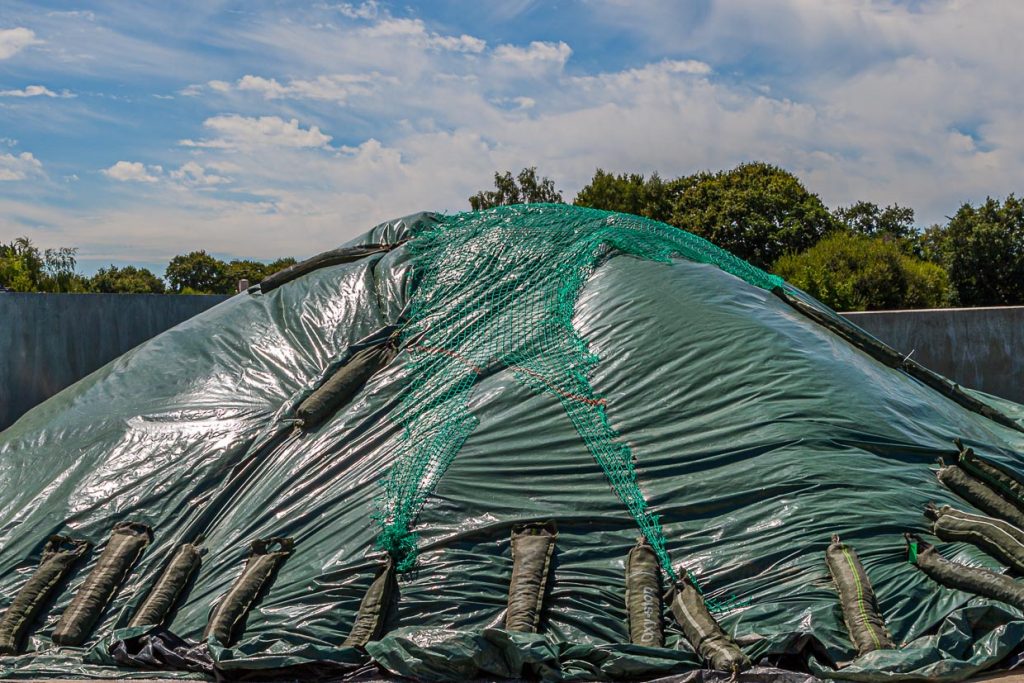
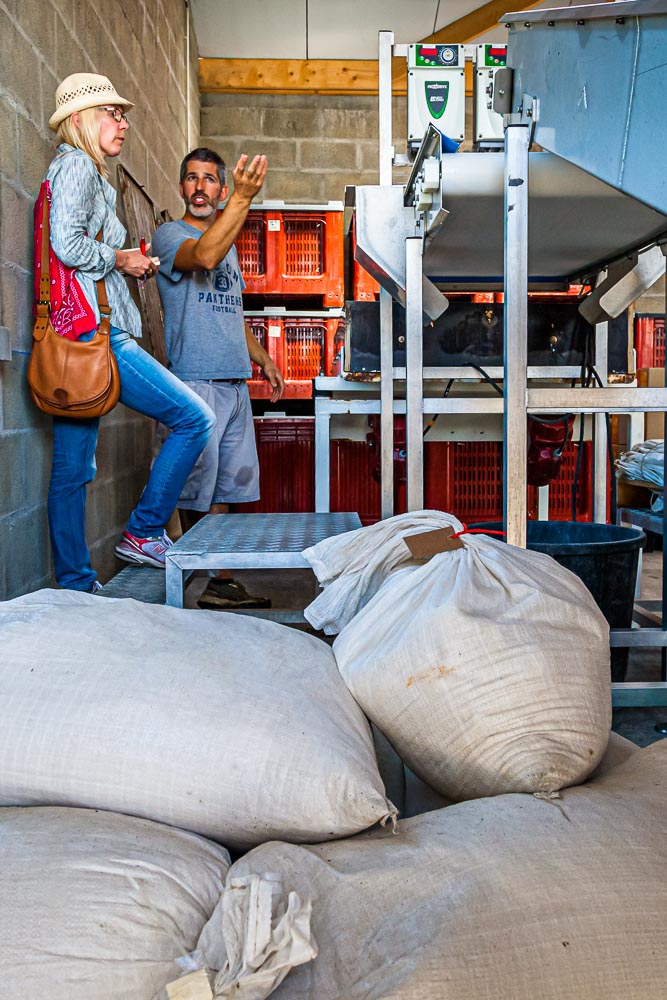
There is the coarse sea salt and the fine sea salt. Both types of grains are packaged in 1 to 25 kg portions. This salt is called by the French Sel gris, gray salt. The color is caused by the contact with the clay soil in the salt basins and makes the salt even more rich in minerals. There are no additives or mechanical processing. This salt is the product of the interaction of wind, sun and tides with artisanal work. Since Gilles Morel and Matthieu Le Chantoux are also in charge of product development, they are continually expanding their range. There is Sel gris with organic herbs, with anise, with wild garlic or with chili. Matthieu le Chantoux: “Nowadays, people want to know where their food comes from. Our salt is a natural product in the truest sense of the word. If we add spices to the salt, here too we only use organic products whose origin we know.”
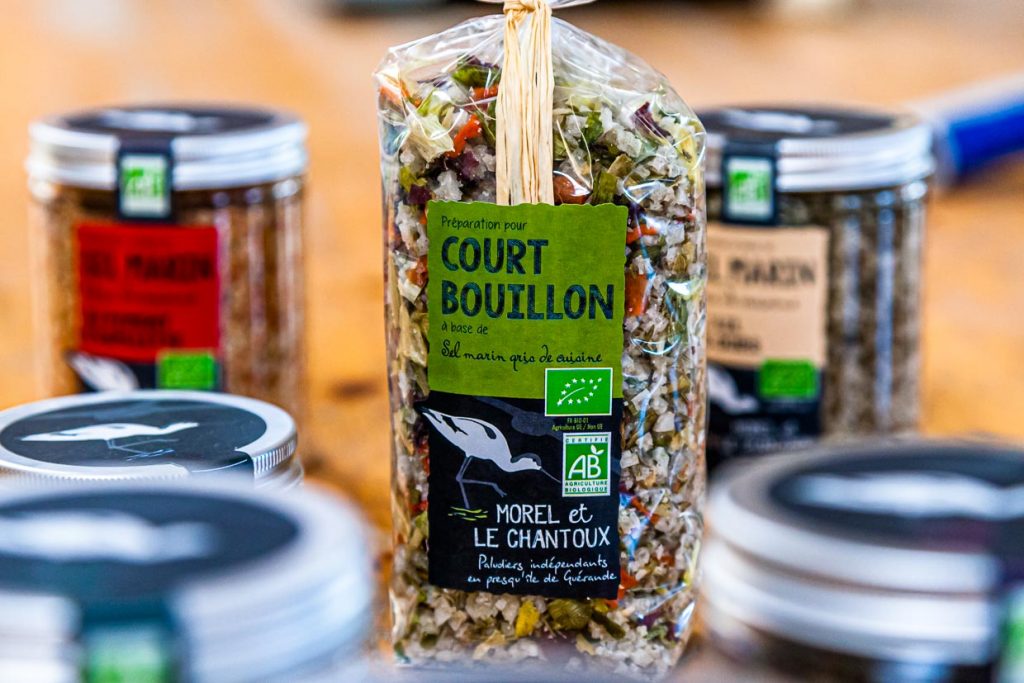
They have chosen the elegant and shy avocet as their heraldic animal. With its upwardly curved beak, it lives year-round in the marshes of Brittany. It adorns every package, because the design also has to be right for the product to sell. After all, the eye is a deciding factor when it comes to high-quality food.
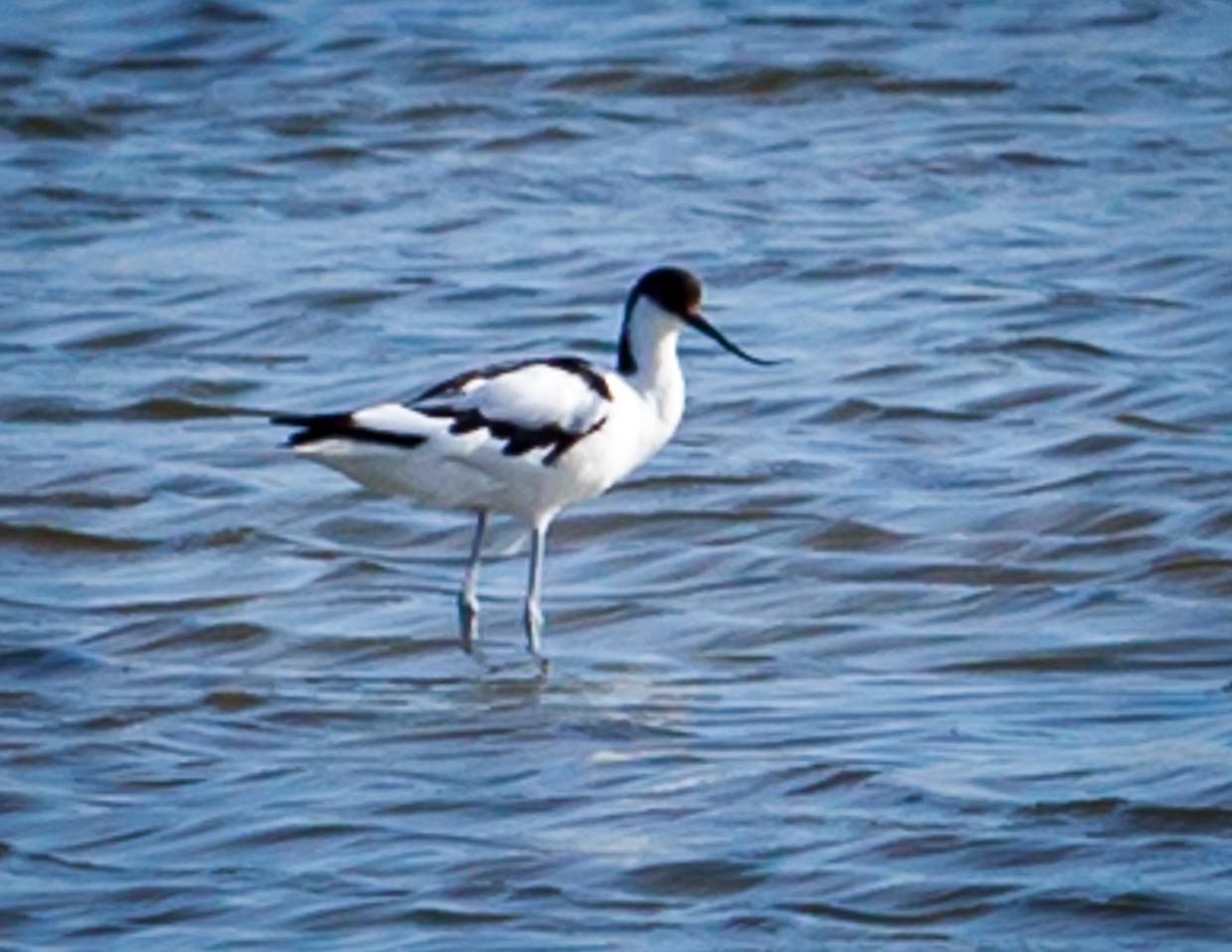
The shy avocet is at home in the marshes where Guérande salt is extracted / © Photo: Georg Berg
A sophisticated channel system
The time for harvesting salt is short and is between June and September. In these few months it is important to apply the ancient knowledge passed down to the three elements of nature: Ocean, Sun and Wind. The game with the tides is finely balanced. Uncle and nephew make use of a traditionally proven system. Matthieu le Chantoux: “We force the water to evaporate and pass it through a system of channels where, from basin to basin, the salinity of the water increases until, at the end, the process of crystallization begins and the time of harvesting approaches.”
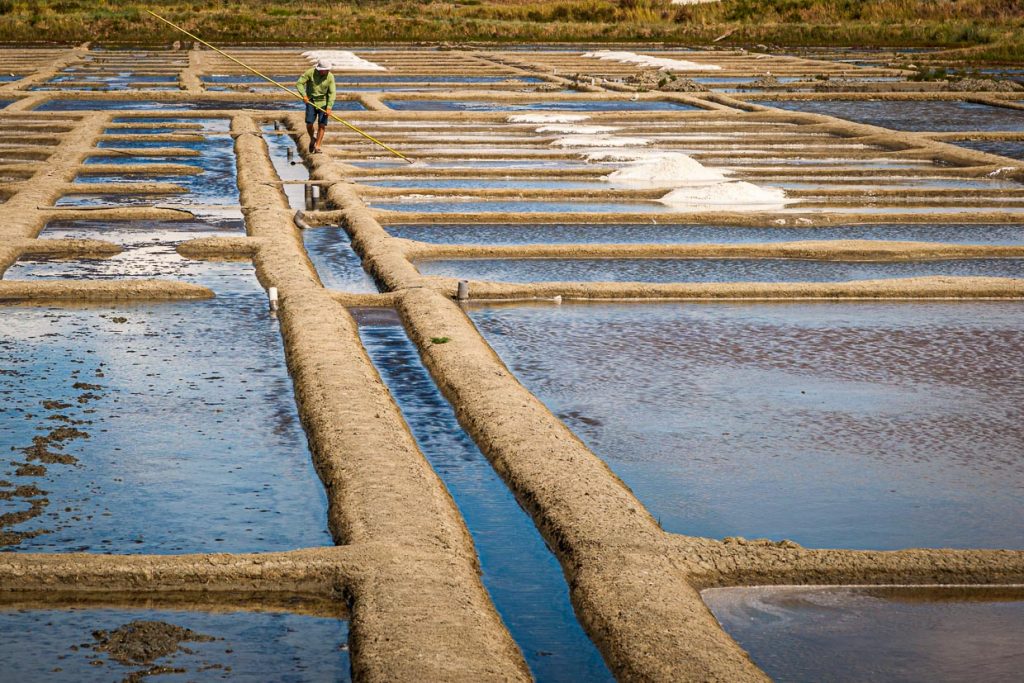
Once a month, the reservoir is flooded with seawater. This is the start of a water route managed by the salt farmers. The water should constantly move and evaporate. This controlled inflow of seawater takes place daily, from the large main basin to the reserve basins.
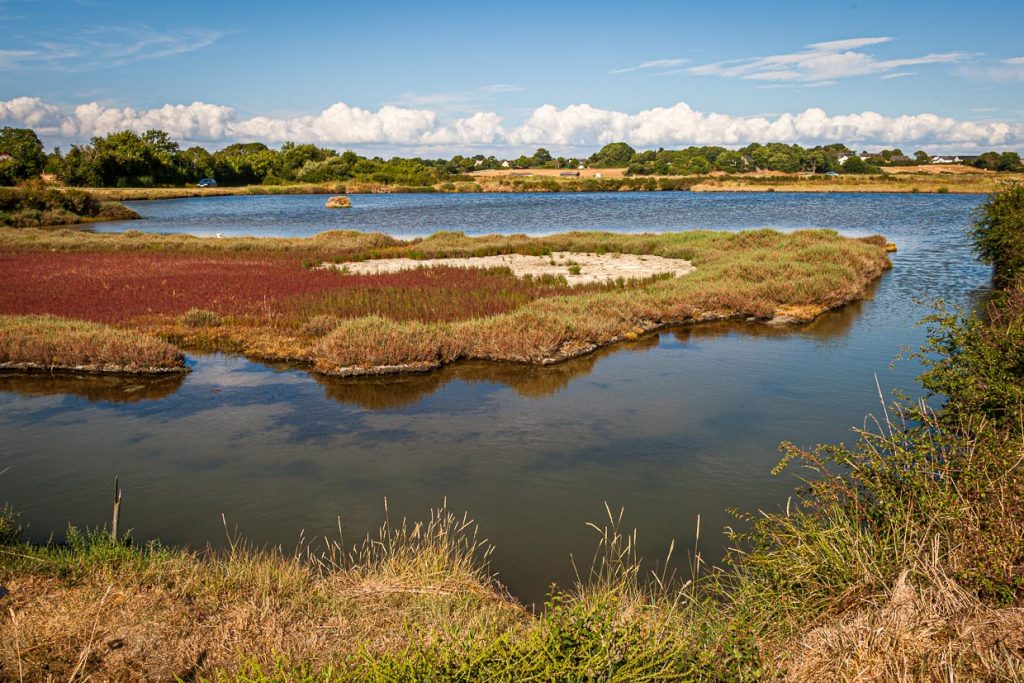
This continues until the water finally reaches the oeillets, the basins where harvesting also takes place. Here the salt content is so high that it is inhospitable for animals and plants. In his work, the salt worker must always think 6 to 12 hours ahead. Because the water moves very slowly and the pipes that regulate the inflow or outflow must be operated with care and the planned time delay. The aim is to let the water run through the set chicanes over as large a surface as possible. This well thought-out evaporation, controlled with meticulous inflow and outflow, is often torpedoed by heavy rains during the harvest season. Then the salt farmers are set back in their harvesting work by up to two weeks.
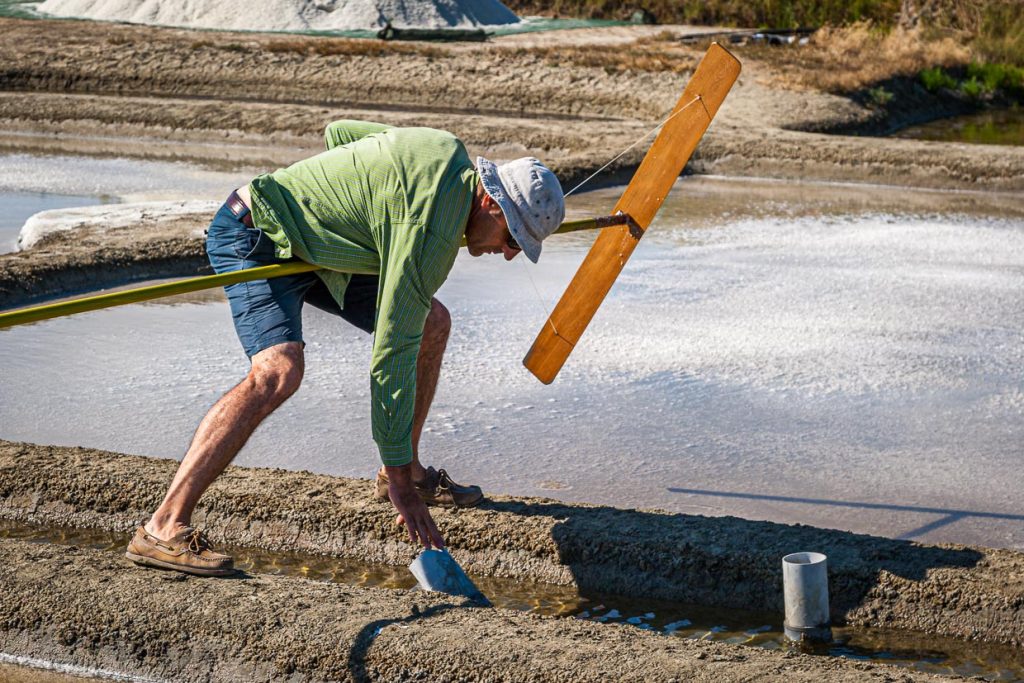
The tools of the paludier’s trade
Las are the name of the five-meter-long tools used to push the sel gris together. They are elegant and powerful movements. The edges of the las are different, one side is used to push the water, the other side can stack the salt. Thus, in the basins gradually grow salt cones of up to 70 kilos. In September, when the sun no longer has enough power, the harvest season ends. It is not until February that the preparation for the new season begins. The basins have to be re-fixed, sealed and maintained.
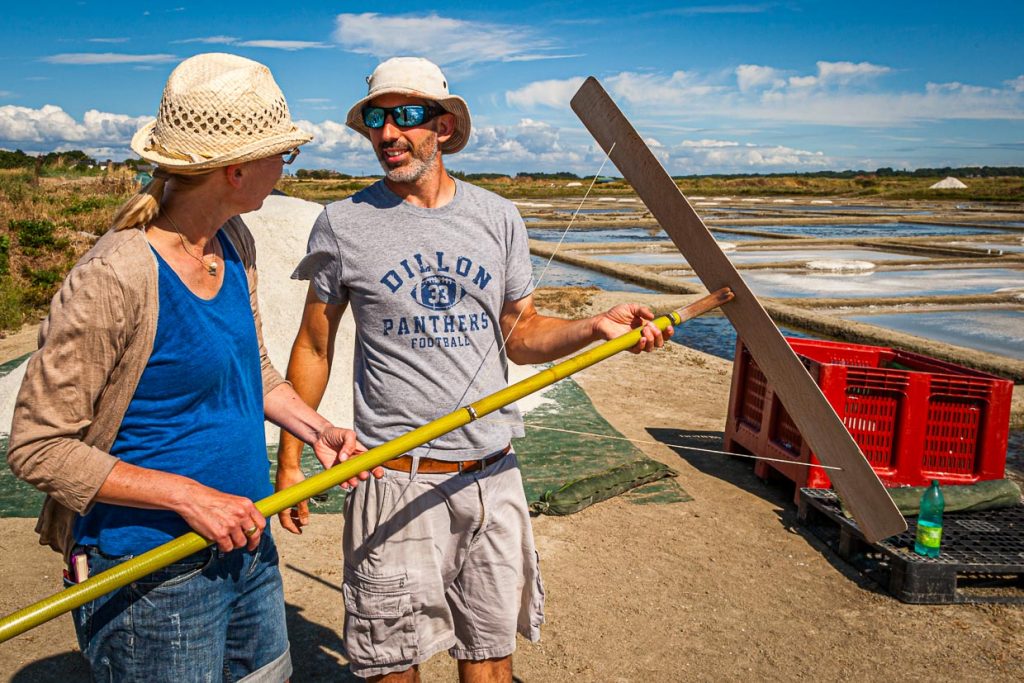
Off to the white land
Guérande means Gwenn Rann – white land. When the sun falls at an oblique angle on the salt pans and the wind rises from the west or east and sweeps across the land, the time of harvest has come. Around 4:00 p.m., we make our way from the company’s salt warehouse to the salt pans. The few tools that are needed are always on site. The daily harvest begins with the precious fleur de sel.
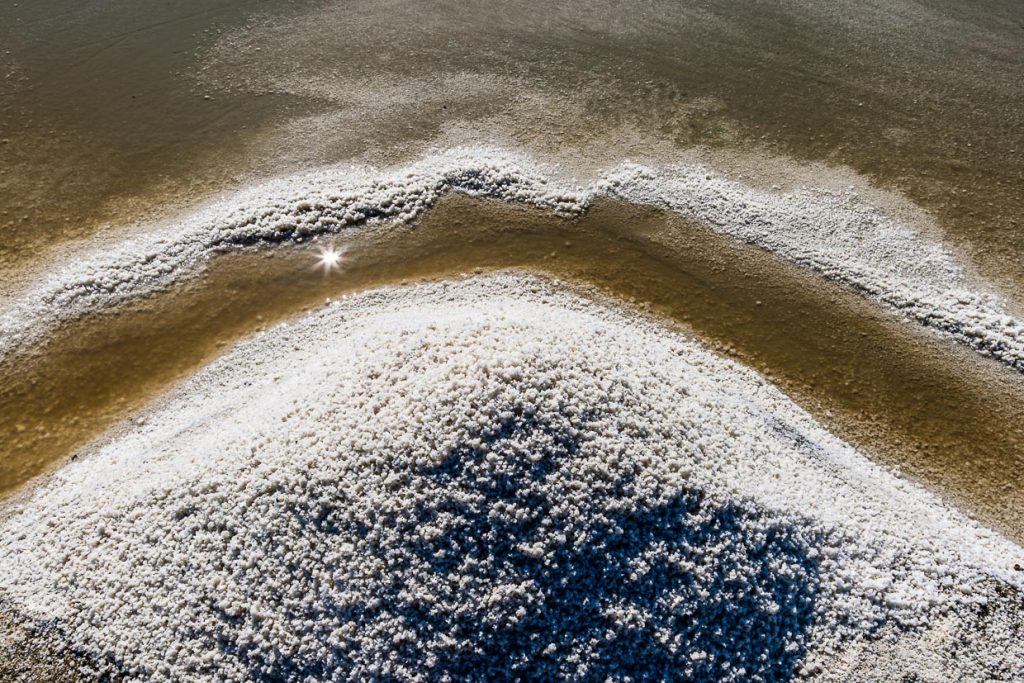
The crown of creation
Harvesting the delicate salt slabs requires skill and practice, but is far less physically demanding than handling the five-meter-long salt pusher, the las with which the sel gris is pushed together. Matthieu lets me get close to the Breton gold and I scoop the fine crystals from the surface of the water with a rectangular and shallow sieve.
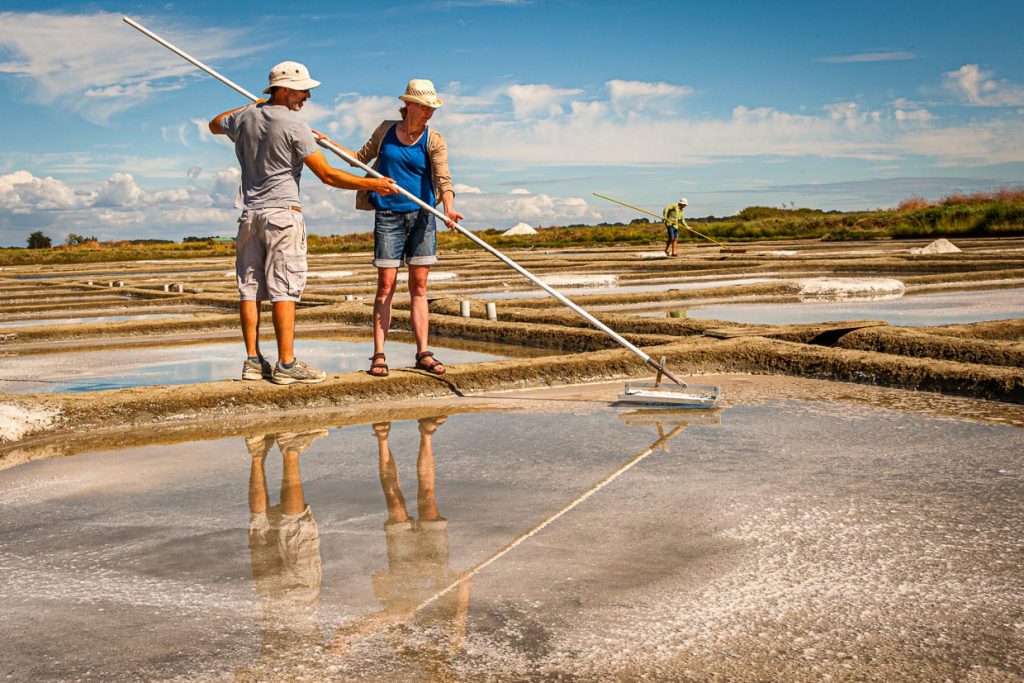
The best and most expensive of all salts – Fleur de Sel
Appreciated by gourmets, the salt flakes floating on the surface of the water are a wonderful hand salt that is never intrusive and can round out a dish. It has been given many flattering names, the most prosaic of which is that of the salt flower. White gold, Breton gold or even caviar, the fleur de sel is often called. However, for a long time the salt workers in Guérande did not appreciate the fleur de sel. They only harvested sel gris, the salt with a slightly grayish tint due to the minerals in the clay soils of the salt basins.
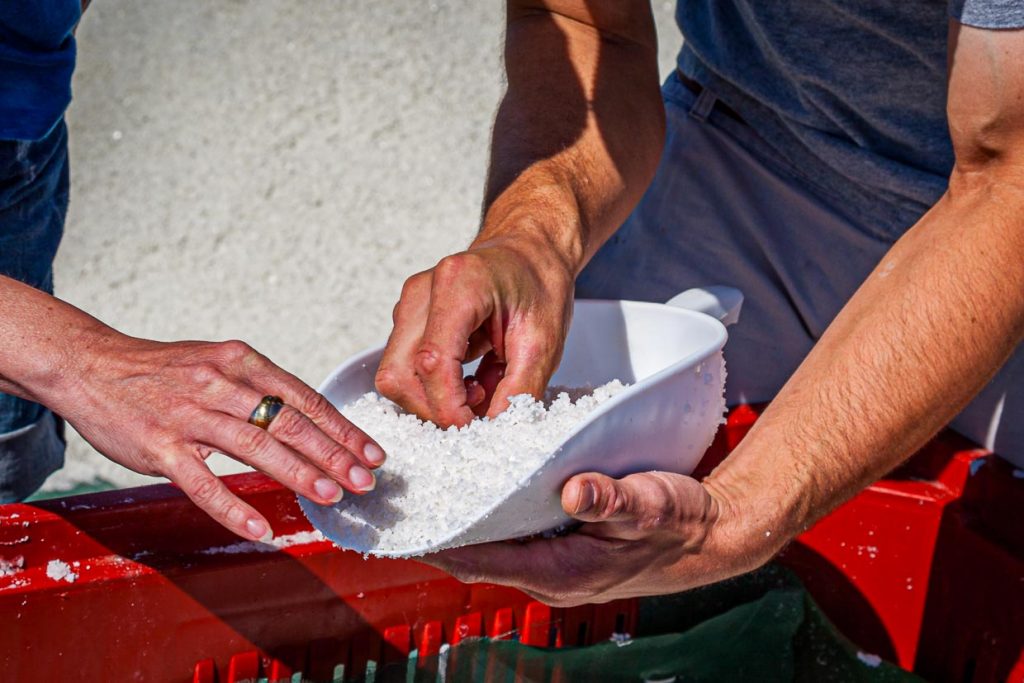
The queen among the salts, the fine fleur de sel, was simply ignored. Even the name Fleur del Sel, which comes from this region, has not been protected by the salt workers. Nowadays, the delicate salt flowers are a special ingredient for the kitchen. They are appreciated by top chefs for their mild and slowly developing taste and have long since found their way into private kitchens. Fleur de Sel never imposes itself, but brings out the best in every dish. But back to the harvesting work: Fleur de Sel floats on the surface of the water and looks like a foam residue driven to the edge of the bathtub. It needs sun and the west or east wind so that the fleur de sel can then be skimmed off in the late afternoon.
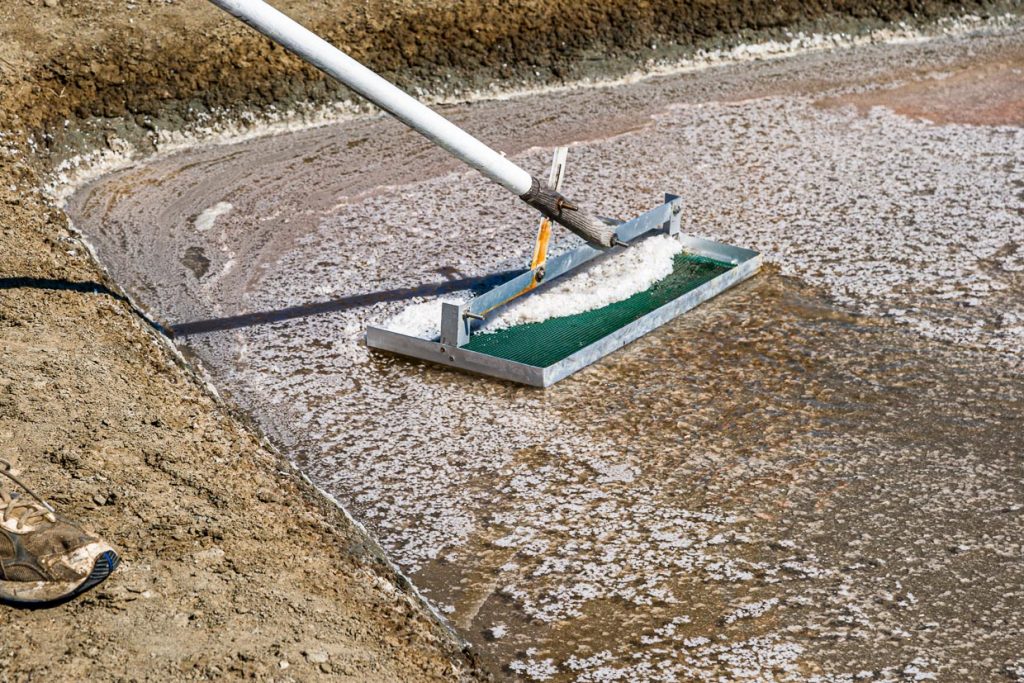
The crisp west wind and the fine east wind
Depending on the direction from which the wind blows over the 7 x 10 meter salt basins, different crystalline structures are created. Thus, the two professional career changers have made an interesting observation that perhaps only succeeds when a project is approached with an outside perspective. The delicate fleur de sel is shaped by the wind. If the westerly wind from the ocean blows across the 46 salt ponds in the afternoon, larger and crisper crystals are formed. The air from the ocean is more humid, and the drying process takes longer. The warmer east wind, on the other hand, produces finer crystals with faster drying. A small but subtle difference, which the two salt farmers also note on the packaging of their Fleur de Sel with Vent d’Oest and Vent d’Est.
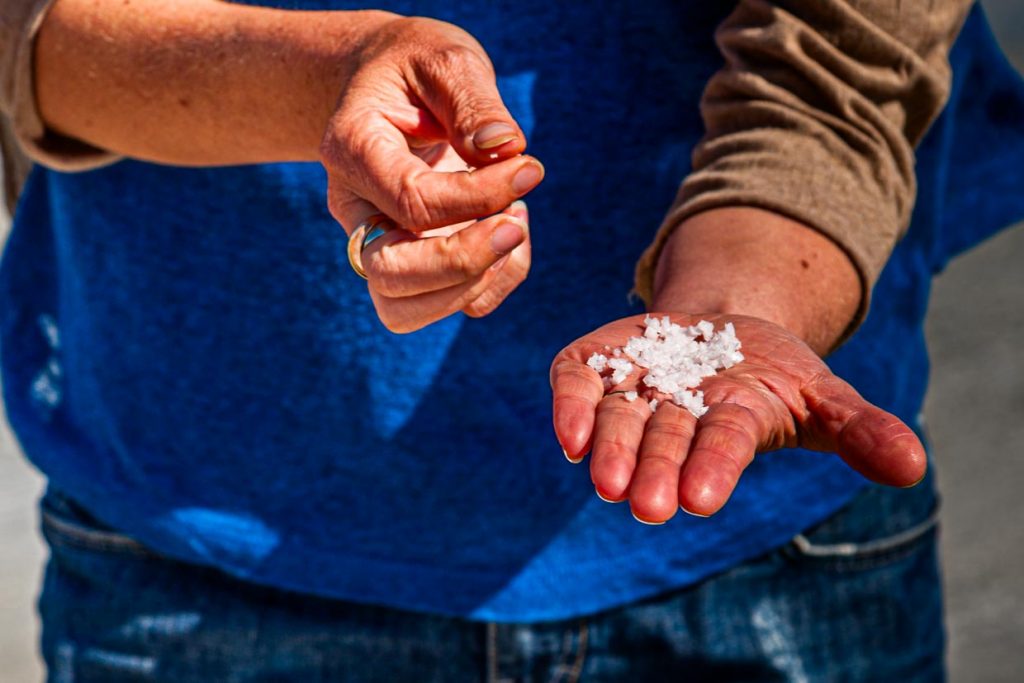
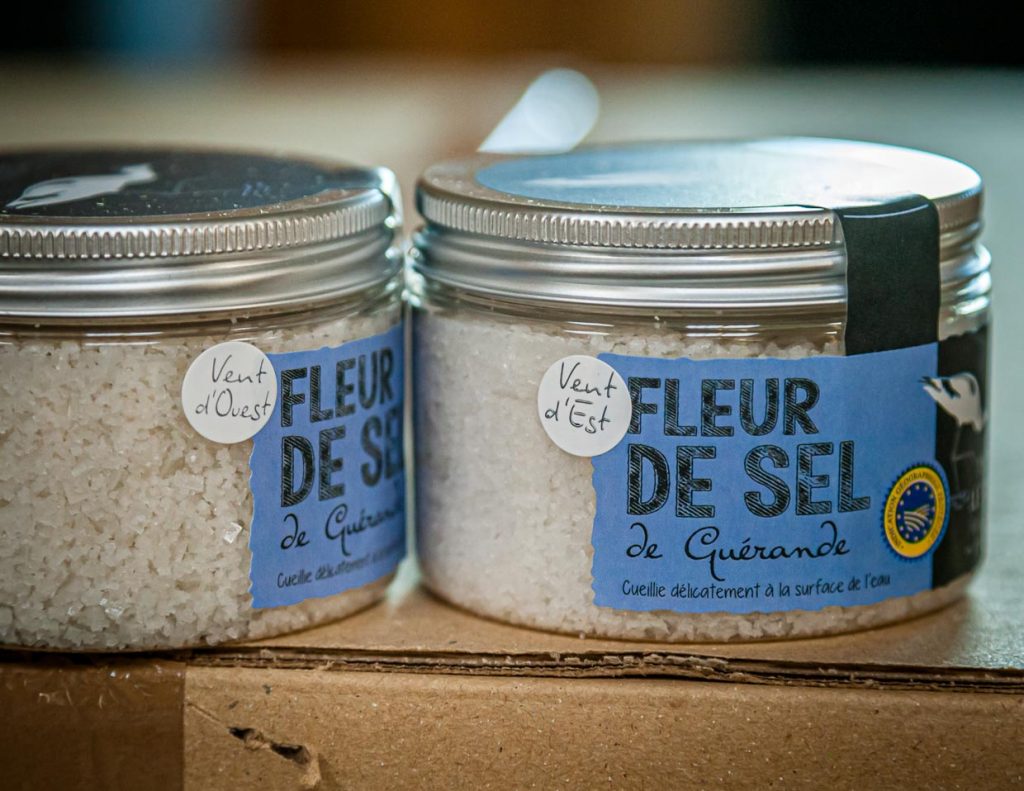
There is a wind from the west, so I will harvest the finer fleur de sel. I already know that from the next cooking with fleur de sel, I will think of this wonderful summer atmosphere in the Guérande salt flats.
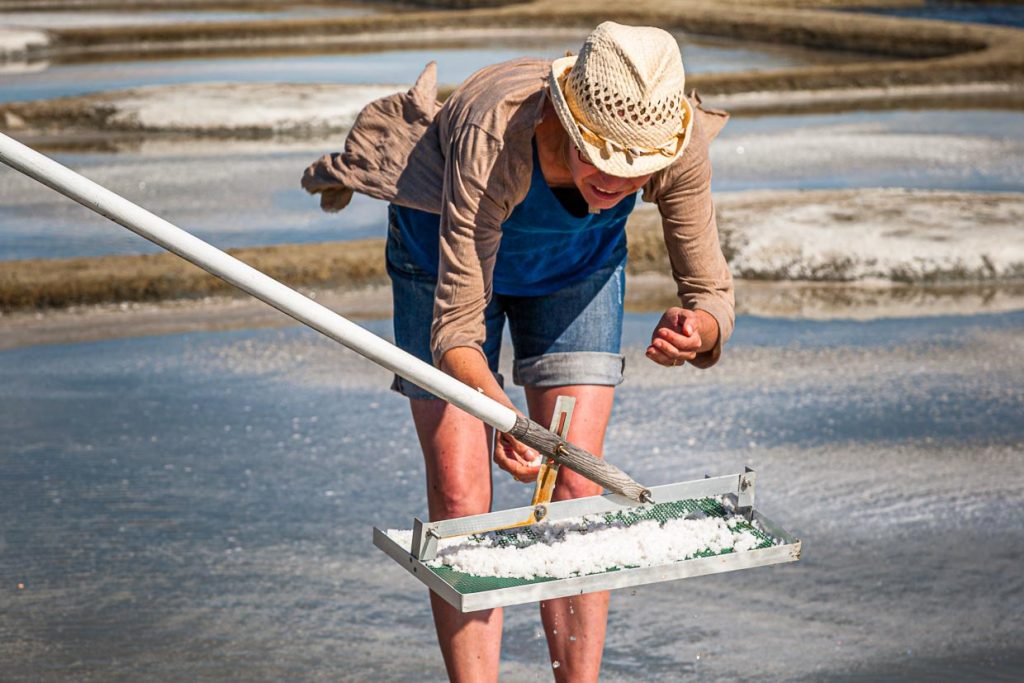
The harvest of the Fleur de Sel comes in a small container. There are two mountains of salt here,
because the physically easier work of harvesting the salt blossoms is currently done by two female students
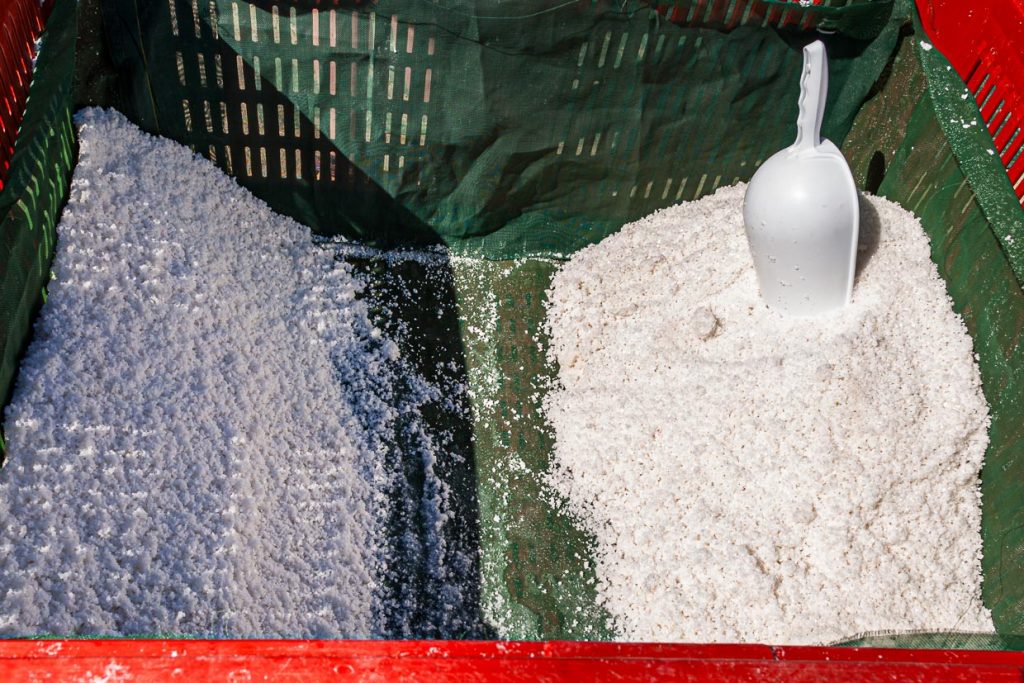
When the sun is already lower, we say goodbye to Gilles and Matthieu. We stand on a dam for a moment and watch the two men at work. Gilles Morel pulls the long tool through the water with powerful movements. He wanders from basin to basin, moving elegantly like a trapeze artist on a high wire. Merci beaucoup Gilles et Matthieu!
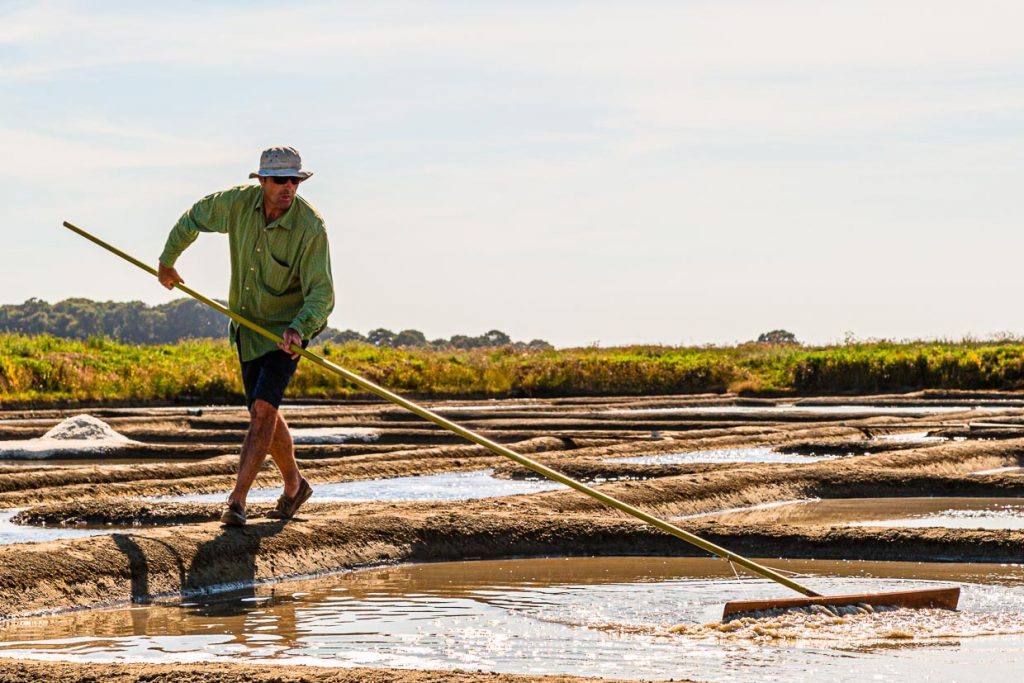
Gastro tip from the Paludier
Of course, the producer of a noble cooking ingredient also knows something about good food. Actually, we wanted to go to the favorite restaurant of the extremely successful and popular novel character Inspector George Dupin, Le Grand Large in Le Croisic, but the distance was too great. We would not have made it on time for our appointment. So Matthieu gave me a restaurant tip from the area. He recommended La Vigie in Piriac sur Mer. Quite excellent was the small 3-course menu at lunchtime with a view of the marina.
Products from Morel & Le Chantoux are available in Germany at: Peter sei selig – Genusspunkt Küche
More information about the two independent salt farmers from the Guérande is available in French, English and Hungarian at Leseldeguerande
The profession of paludier has a long tradition in Guérande, the southern part of Brittany. For more than 2,000 years, salt workers have been wringing the precious Breton gold from the ocean. Long before Vasco da Gamma returned to Portugal from India in 1499 with the first cargo of spices, Guérande salt was successfully traded. The sea salt was a seasoning, vital mineral and valuable preservative.
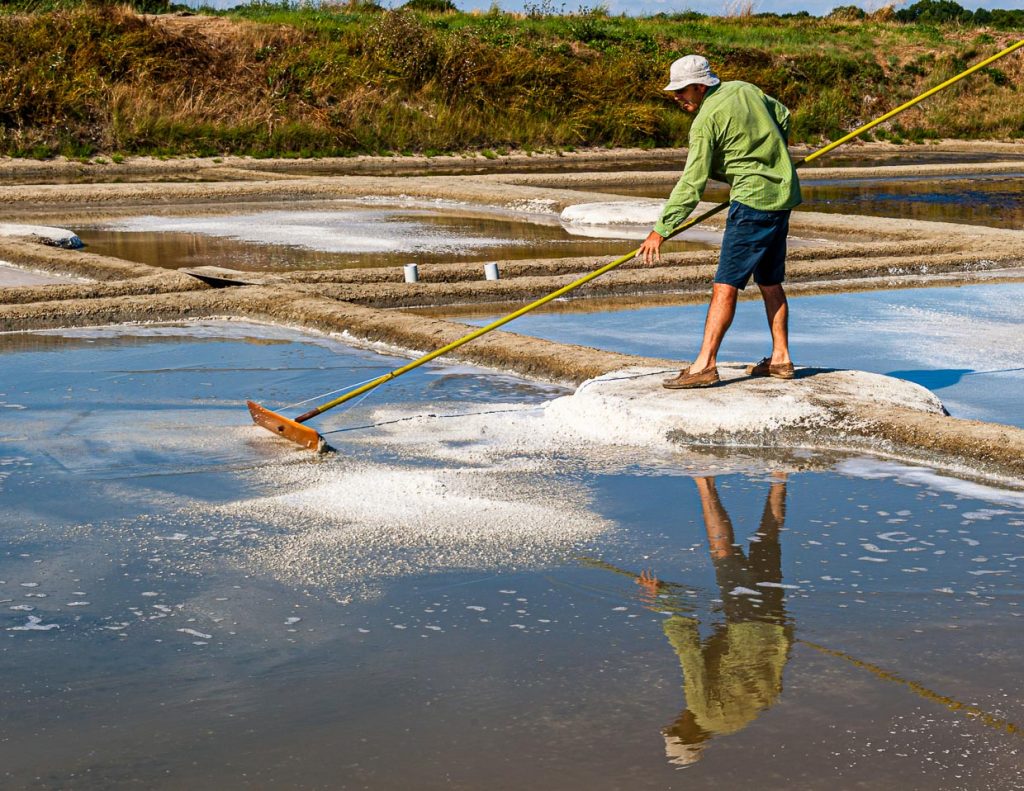
The profession of the paludier
About 300 paludiers still exist in the Guérande basin around the small fortified town of Guérande near Nantes. The vast majority are affiliated with a cooperative. They deliver their salt harvest to the headquarters and are not involved in further marketing. The salt farmers Gilles Morel and Matthieu Le Chantoux, whom we meet on this summer’s day in July, are among the few who dedicate themselves to salt extraction from A to Z.
Gwenn Rann. In the white land.
The Betrones call the Guérande Gwenn Rann, white land. The harvest time for the sea salt is short, between June and September. In these few months, it is important to apply the ancient ancestral knowledge to the elements of wind, sun and ocean. It’s a finely balanced game with the tides. The salt farmers force the water to evaporate and pass it through a system of channels where, from basin to basin, the salinity of the water increases until, at the end, the process of crystallization begins and the time of harvesting approaches.

Fleur de Sel and Sel gris
Prized by gourmets, fleur de sel is a hand salt that is never intrusive and can round out a dish. Many flattering names have been given to fleur de sel. It is often called white gold, Breton gold or caviar. However, the salt farmers in the Guérande region did not appreciate it for a long time. They only harvested the sel gris, the salt that is slightly grayish due to the minerals in the clay soils of the salt basins, but thus also particularly rich in minerals. The queen among the salts, the fine Fleur de Sel was simply ignored. Even the name Fleur del Sel, which originated in this region, was not protected by the salt farmers. Nowadays, the delicate salt flowers are a special ingredient, are appreciated by top chefs for their mild and slowly unfolding taste and have long since found their way into private kitchens.

Play of the tides
Once a month the reservoir is flooded with sea water. This is the start of a water route managed by the salt farmers. The water is supposed to move constantly, evaporating as it does so. Every day this controlled inflow of seawater takes place, from the large main basin to the reserve basins. Until finally the water reaches the oeillets, the basins where the harvesting also takes place.
Fleur de Sel – the crown of creation
Fleur de Sel floats on the surface of the water and looks like a fragile first layer of ice. It needs sun and wind so that in the late afternoon the fleur de sel can be skimmed off. Harvesting the delicate slabs of salt requires skill and practice, but is far less physically demanding than handling the five-meter-long salt pusher, the las used to push the sel gris together.
Other aspects: The foresighted work of the paludiers / Building chicanes – an ingenious canal system / Woe to rain / Of the east wind and the west wind / Interview with two independent paludiers /.

